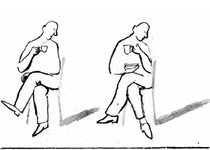- Dla kandydatów
- Dla studentów
- Informacje dla studentów I roku
- Informacje ogólne
- Informator o studiach
- Organizacja roku
- Zarządzenia Prodziekana ds. studenckich
- Kolokwia i egzaminy
- Prace i egzaminy dyplomowe
- Materiały dydaktyczne
- Pracownie
- Pracownia Projektów Studenckich
- Zespołowe projekty studenckie
- Oprogramowanie
- Konta i hasła w sieci studenckiej
- Studia doktoranckie
- Studia podyplomowe
- Samorząd, koła, kluby, chór
- Stypendia i sprawy socjalne
- Oferty pracy
- Dla pracowników
- Dla gości
- Badania
- Rada Naukowa Dyscypliny Nauki Fizyczne
- Kierunki badań
- Priorytetowy Obszar Badawczy II IDUB
- Realizowane projekty
- Sekcja ds. Obsługi Badań
- Seminaria i konwersatoria
- Konwersatorium im.J.Pniewskiego i L.Infelda
- Algebry operatorów i ich zastosowania w fizyce
- Środowiskowe Seminarium Fizyki Atmosfery
- Seminarium Zakładu Biofizyki
- Seminarium z fizyki biologicznej i bioinformatyki
- Seminarium Fizyki Ciała Stałego
- Multimedialne seminarium z ekono- i socjofizyki
- Exact Results in Quantum Theory
- Środowiskowe Seminarium Fotoniczne
- Seminarium Fotoniki
- Seminarium Zakładu Fotoniki
- Seminarium Gamma
- Seminarium "High Energy, Cosmology and Astro-particle physics (HECA)"
- Środowiskowe Seminarium z Informacji i Technologii Kwantowych
- Seminarium Fizyki Jądra Atomowego
- Seminarium fizyki litosfery i planetologii
- Seminarium Fizyki Materii Skondensowanej
- Seminarium "Modeling of Complex Systems"
- Seminarium nauk o widzeniu
- Seminarium "Nieliniowość i Geometria"
- Seminarium Optyczne
- Soft Matter and Complex Systems Seminar
- String Theory Journal Club
- Seminarium Koła Struktur Matematycznych Fizyki
- Seminarium "Teoria cząstek elementarnych i kosmologia"
- Seminarium KMMF "Teoria Dwoistości"
- Seminarium Teorii Względności i Grawitacji
- Seminarium "The Trans-Carpathian Seminar on Geometry & Physics"
- Seminarium Fizyki Wielkich Energii
- Konferencje
- Publikacje
- Research Highlights
- Optyka na Uniwersytecie Warszawskim
- Wydział
- Misja i strategia
- Władze Wydziału
- Zarządzenia Dziekana
- Zarządzenia Prodziekana ds. studenckich
- Struktura organizacyjna
- Historia Wydziału
- 90 lat Wydziału Fizyki
- 100 lat Wydziału Fizyki
- Fizykoteka – Wirtualne Muzeum Wydziału Fizyki UW
- Dziekanat
- Rada Wydziału
- Jakość kształcenia
- Stopnie i tytuły naukowe
- Nagrody Wydziału Fizyki
- Biblioteka
- Ośrodek Komputerowy
- Pracownicy i doktoranci
- Zamówienia publiczne
- Rezerwacja i wynajem sal
- Oferty pracy
- Osoby
- Zapraszamy
- Media
The Algebra & Geometry of Modern Physics
2013/2014 | 2014/2015 | 2015/2016 | 2016/2017 | 2017/2018 | 2018/2019 | Strona własna seminarium
2017-06-08 (Czwartek)
Petr Vasko (WFUW)
Correspondence between Chern-Simons theory and Wess-Zumino-Witten models
I will discuss various relations between CS and WZW theories at classical level. First, I show how the Wess-Zumino term arises as a gauge variation of Chern-Simons action, in case the three-manifold has a boundary. The main topic, however, will be to derive an equivalence between classical phase spaces of CS and WZW theories, following https://arxiv.org/abs/hep-th/0101170v1. The WZW model will be defined on a strip with "untwisted" boundary conditions while the corresponding CS theory lives on (disc x line) with two Wilson lines (in representations determined by boundary conditions at both ends of the strip) puncturing the disc. Brief comments about quantization might be mentioned if time allows.
2017-06-01 (Czwartek)
Noémie Combe (Institut de Mathématiques de Marseille)
A new cellulation for the n-th configuration space of R^2 and moduli space M(0,n)
The first point of this seminar is to introduce the configuration space and the moduli space M(0,n) for genus 0 curves with n distinct points. The second point will be to consider relations between the configuration space for R^2 to braid groups. We present as well the idea of a new cell decomposition for M(0,n) which is reminiscent to Shabat-Voevodsky-Penner-Grothendieck cellulation for the Teichmuller space T_{g,n} for g>0.
2017-05-25 (Czwartek)
Jacek Krajczok (WFUW)
Wess-Zumino-Witten model, part II
During the talk I will introduce the Wess-Zumino-Witten model. I'll describe it's space of solutions and construct a pre-symplectic form on it.
2017-05-18 (Czwartek)
Jacek Krajczok (WFUW)
Wess-Zumino-Witten model
During the talk I will introduce the Wess-Zumino-Witten model. I'll describe it's space of solutions and construct a pre-symplectic form on it.
2017-04-27 (Czwartek)
Piotr Surówka (Max Planck Institute for the Physics of Complex Systems)
Symmetry, topology and hydrodynamics
I will show how hydrodynamics is modified if the underlying fluid constituents are massless Weyl fermions, which are anomalous at the quantum level. The non-dissipative nature of the modification allows one to construct a partition function which compactly describes the transport properties of the system. I will explain how the anomalous properties can be understood in terms of heat kernels.
2017-04-20 (Czwartek)
Helder Larraguivel (WFUW)
Chern-Simons theory and Wilson lines, part V
2017-04-06 (Czwartek)
Helder Larraguivel (WFUW)
Chern-Simons theory and Wilson lines, part IV
2017-03-30 (Czwartek)
Helder Larraguivel (WFUW)
Chern-Simons theory and Wilson lines, part III
2017-03-16 (Czwartek)
Jacek Krajczok (WFUW)
Chern-Simons theory and Wilson lines, part II
2017-03-09 (Czwartek)
Hiroyuki Fuji (Kagawa University, Japan)
Partial chord diagrams and matrix models
Concepts of fatgraphs and partial chord diagrams occur in many branches ofmathematics, including topology, geometry, and representation theory.During the last decade, some applications of these mathematical objects tothe research of the molecular biology have been reported. Among them, inparticular, a characterization by the genus in the fatgraph presentationof the RNA has been studied remarkably. In this talk, I will explain howthe concepts of fatgraphs and partial chord diagrams are applied to thestudy of the secondary structure of the RNA with.pseudoknots, andintroduce the matrix model that is invented by basic techniques of thequantum field theory.







